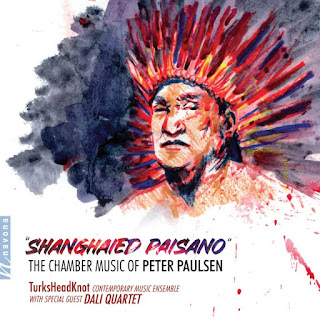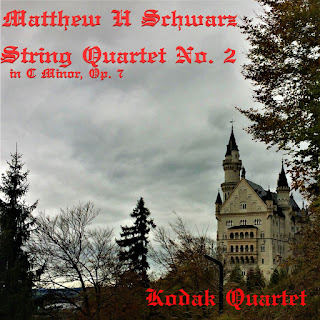Shuying Li - The Last Hive Mind
Shuying Li - The Last Hive Mind
The Last Hive Mind, chock-full of powerful rhythmic syncopation, extended techniques, and hefty chromaticism, is one of Li's most engaging works for large ensemble.
Shuying Li's The Last Hive Mind is an intense and energetic work for grade 5-6 wind band composed in 2019. Li has fortunately had several repeated performances of this work, with the most recent being 2 December 2021 at The Hartt School, where Li completed her undergraduate after moving to the United States. Conducted by Glen Adsit, for whom the work was originally written, the Hartt Wind Ensemble gave a convincing performance, allowing Li's musical story to come through to the audience. The Last Hive Mind supposedly depicts the fight between two forces, one an evil, technological 'hive mind' and the other a wistful and tuneful melody.
The Last Hive Mind, chock-full of powerful rhythmic syncopation, extended techniques, and hefty chromaticism, is one of Li's most engaging works for large ensemble. Even with her limited approach to melody, Li's masterful use of timbral color brings access and interest to the work. The Last Hive Mind continues the sound world of the wind band tradition, a main reason for its high programmability since its premiere. The opening hits the audience with aggressive tritone dissonances in unison rhythms, occasionally altered with piano and woodwind murmurings. While the gestures here are effective, the actual rhythms do not come across to the ear since Li does not establish a stable feel until later into the piece. However, she makes up for this by soon introducing a short burst of groove in the drum set, allowing the rhythmic motive to be recognized for the remainder of the work.
Like other large ensemble works of hers, Li relies heavily on the piano as an important solo instrument. While this can be a risky choice in a band work, Li uses the instrument well at first. After the striking opening, the solo piano lines come through as beautiful, yet somehow remorseful fragments of a melody from long ago. The sparse orchestration during this section allows for Li's enormous build up to be even more effective. The heavy machinery of the full ensemble quickly overpowers the thoughtful piano solo, and quickens with wild glissandi and chromatic runs in the upper winds. Occasionally, Li throws in musical ideas of a quasi-jazz idiom. Besides the orchestrational decision to include the drum set as one of the primary percussion instruments as well as give an extended solo to the trumpet with a Harmon mute, Li's harmonic language, especially in her piano melodies, seem to be a strange but interesting combination of jazzy and twentieth-century.
The ending of the work uses Li's seemingly trademarked false-endings, heard in several of her works. Li revives the solo piano lines, and even pulls quotations from her Canton Snowstorm piano concerto. This abrupt lullaby and lyricism is honestly quite shocking after the raucous, aleatoric cacophony. Unfortunately, the piano solo, only really accompanied by air noise and key clicks in the winds, feels like an anticlimactic let-down after the mechanical clamor of a piece.



Comments
Post a Comment